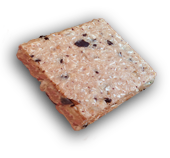 Shin splints are nasty. They bench athletes and discourage new runners from achieving their fitness and weight loss goals. After a client’s recent battle and success, I felt compelled to share my top tips for healing shin splints and getting back to your runs.
Shin splints are nasty. They bench athletes and discourage new runners from achieving their fitness and weight loss goals. After a client’s recent battle and success, I felt compelled to share my top tips for healing shin splints and getting back to your runs.
Next 2-3 weeks, or as pain persists:
1. To permit cardio fitness maintenance, trade the aggravating running and bouncing exercises for cardio on the bike, elliptical, hiking, rowing machine or take it to the pool for swimming or pool running.
2. To reduce inflammation, apply ice (or bag of frozen blueberries) and elevate for 20 minutes before and especially after workouts.
3. Take anti-inflammatory, such as ibuprofen (Advil/Motrin); naproxen (Aleve/Naprosyn) as directed on bottle. I ‘d go with Aleve. It lasts 12 hours so you only need to remember to take it twice / day.
4. You can wrap or tape the shin for support, but it’s time consuming, frequently slips off when with perspiration and we Green people feel bad about not being able to recycle all that tape!
Nevertheless, here’s a video demonstrating effective taping. VIDEO: How to Tape Shin Splints
Instead, Byron and I recommend a Vulkan Shin Support for flexible support during training.
5. Try these stretches twice a day.
- Calf stretches – Stand on the bottom step facing stairs. Hold banister. With right toe at edge of step, lower heel past step to stretch right calf. Hold for 30 seconds. Get soleus – keeping heel down and slowly bend right knee until stretch moves to your lower calf. Hold 30 seconds. Repeat with left foot.
- Ankle stretches – hands balance against wall, point right toe down, press forward releasing tension in ankle. Turn toes left, press and hold. Turn toes right, press and hold. Repeat all 3 stretches on left ankle.
- Lying Shin Stretch – Lie on one side. Grasp top forefoot behind. Pull forefoot to lower back. Hold stretch for 20 seconds. Repeat with opposite foot.
6. Be sure your running shoes were made for you! Go to a shoe store that actually trains their staff to put people in the correct running shoe based upon foot type (flexible pronator vs. rigid supinator, etc). Remember to bring a pair of running socks and orthotics if you have them. Trying on shoes without them is completely unrealistic. Here’s one in Brentwood:
FrontRunners Footwear 11620 San Vicente Blvd, Los Angeles, CA 90049
(310) 207-0216
7. See a podiatrist for custom shoe orthotics (shoe inserts) made specifically for sports. I’ll vouch for orthotics healing track-induced shin splints in middle school, as well 2010’s plantar fasciitis – My fault – waited too long to replace the second pair. Since hindered contact with the ground affects everything north of the foot, orthotics can minimize an assortment of knee, hip, low back issues too. Call local podiatrists’ and find one who takes your insurance as they ain’t cheap. My insurance pays minimally on (what it considers) non-essentials – don’t get me started – so I unfortunately had to pay the full $500 (visit and custom orthotic formation) out of pocket. However, amortizing that over an approximate five-year life span, and considering the painful alternative, the orthotics are still a bargain. Per chance you’re in LA, or my hometown Roanoke, VA, here’s the two podiatrists to whom I’m mighty gracious.
Liddy Podiatry 8797 Beverly Blvd, West Hollywood, CA 90048
(310) 652-1163
Dr. Donald Stefl 2705 Brambleton Avenue SW, Roanoke, VA 24015
540-774-5585
8. If your insurance won’t cover a podiatric visit and orthotics, try Dr. Scholl’s Custom Fit Orthotics. They make about 20 different orthotics available at drug stores. Find a Dr. Scholl’s foot mapping machine in a store nearby to determine the best corrective shoe insert for your foot. There’s one in CVS at La Cienega / Santa Monica, 3/4 mile from our gym or use this locator link:






